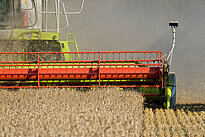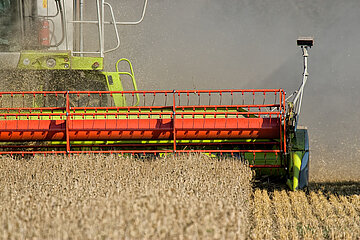Firm agroholding affiliation, ownership structure and performance in Russian agri-food sector
06 July 2021
Largescaleagriculture.com has lately announced the publication of the special issue of International Food and Agribusiness Management Review (IFAMR) on agroholdings and mega-farms. The issue includes eight articles covering the topics of large farms’ acquisition behavior, growth, financial performance, corporate governance and CSR in the empirical contexts of Argentina, Brazil, Kazakhstan, Russia, and Ukraine. In view of the recent release, largescaleagriculture.com has initiated a series of overview reports describing the research articles from the special issue. The present report draws upon the results of the study on corporate governance and firm performance in the Russian agri-food sector co-authored by Alisher Tleubayev, Ihtiyor Bobojonov, Taras Gagalyuk, Emma García Meca and Thomas Glauben. This is a pioneering study in the context of large-scale corporate agri-food production in the context of post-Soviet transition economies.
Introduction
Russia is among the world’s largest producers and exporters of agricultural commodities and plays an important role in global food security. Today, Russian agriculture is dominated by large-scale corporate farms. The share of corporate farms in total agricultural production in Russia amounted to 55.1% in 2018. In addition, high concentration of agri-food production in the hands of a small number of large-scale corporate farms is observed countrywide. For instance, 10.5% of all cultivated farmland in Russia (12.6 million hectares) is operated by 55 largest agri-food companies. Also, top 25 companies account for 46% of the total meat production in the country, while top 20 companies produce almost 10% of all raw milk in Russia.
Besides, the Russian corporate system in general is represented by high levels of ownership concentration. In 2015, for around 60% of the corporate companies in Russia, the ownership stakes of the largest shareholders exceeded 50%. The sustainability of such a model, whereby the agri-food production is dominated by relatively small number of large-scale corporate farms, which in turn are controlled by few shareholders, has been often questioned.
Methods and data
The study by Alisher Tleubayev and his co-authors aimed to understand how the level of ownership concentration and the ownership identities of major shareholders in corporate farms affect their financial performance. For this purpose, the authors used random effects regression model. Firm performance was measured with accounting-based-indicators such as return on assets (ROA) and return on sales (ROS). The ownership concentration was defined as the percentage of shares owned by the largest shareholder (CR1) and the percentage of shares owned by three largest shareholders (CR3). The study considered three most relevant types of ownership identities in the Russian context: managerial ownership, state ownership and business group (agroholding) ownership, each representing an ownership identity and ownership share of the largest shareholder.
The empirical analysis in the study was based on a unique panel data of 203 corporate agri-food companies in Russia for the period between 2012 and 2017. All companies in the sample were engaged in the production and/or processing of agri-food products and represented a sub-sample of the entire agri-food production of Russia. On average, the companies in the sample have a high ownership concentration, with the CR1 and CR3 shareholders controlling about 61% and 77% of all ownership stakes, respectively. Among the CR-1 largest shareholders are agroholdings, executive directors, and the government, with the ownership stakes on average being around 23%, 19%, and 4%, respectively. In addition, ownership concentration in the studied agri-food companies has been steadily growing since 2012. From 2012 to 2017, both CR1 and CR3 have increased by nearly 8% and 4%, respectively.
Results
Ownership concentration and firm performance
The results of the study suggest an inverse U-shaped relationship between ownership concentration and firm performance, with a turning point at around 50%. An average ownership concentration value among the companies in the sample is 61%, which means they are performing below their potential. The authors assume that a reduction of ownership concentration to an optimum range of around 50% might have a significant positive impact on the companies’ performance providing investment opportunities and reducing the exploitation of minority shareholders within Russian agri-food firms.
Shareholders’ identities and firm performance
Alongside ownership concentration, the identities of the largest shareholders might also impact a firm’s performance. The authors have identified relationships between ownership concentration distinguished by different types of shareholders (executive directors, government and agroholdings) and performance variables.
The results show a significant non-linear relationship between ownership concentration in the hands of an executive director and firm performance. Ownership by executive director first increases the firm performance, with each additional percentage owned by this type of shareholders leading to an increase in the levels of the indicators of ROA and ROS by 0.08 and 0.29%, respectively. This effect can be explained by the interest alignment hypothesis, which suggests that managerial ownership improves the financial incentives of managers to maximize firm performance, since managers become the residual claimants of the company income. However, after reaching a turning point of about 34% for ROA and 38% for ROS, the previous positive relationship reverses, and managers might start abusing their ownership control and extract the corporate resources for their personal benefits, which could outweigh the benefits of the interest alignment effect. An average executive director in the sample accounts for around 18%, which is significantly below the calculated turning point. Therefore, the owners of Russian agri-food companies could consider allocating certain shares of their stocks for their management, in the framework of various bonus or compensation options, to improve the financial performance of the firms.
Concentrated ownership in the hands of the government has a similar, non-linear impact on one of the performance variables, ROA, with the turning point being around 39%. The relationship is not significant in the case of the ROS. Despite general unanimity among researchers on the negative impact of state ownership on firm performance, the results of this article suggest that government ownership might improve firm performance up to a certain point. It is worth remembering that the Russian agri-food sector is massively supported by the government. Considering high levels of corruption in Russia, one could assume that firms connected to the state have higher chances of receiving government subsidies and other types of government support (i.e., winning public tenders, obtaining various permissions, certificates, etc.). This could partially explain the positive effect of up to 39% of government ownership on the performance of the agri-food companies in the sample. An average state ownership (around 4%) is substantially below the observed peak point.
The results show that the ownership concentration by agroholdings has a strong positive linear impact on performance. Financial efficiency of agroholding affiliates over standalone firms might be explained by the following factors: agroholdings are well equipped with storage facilities, have better access to outside capital, technologies, intra-group capital, labor, and trade markets. In addition, most of the agroholdings are vertically integrated, thereby having access to raw commodities supply at lower transaction costs. Discussions on the efficiency of agroholdings and whether agroholdings would remain as a model for the organization of agricultural production are still ongoing. Nevertheless, the results of this study illustrate that, at least among the large-scale corporate farms of Russia, agroholding-affiliated farms have better financial performance compared to standalone farms.
By Anna Feshchenko
This article is based on Alisher Tleubayev, Ihtiyor Bobojonov, Taras Gagalyuk, Emma García Meca and Thomas Glauben (2021): "Corporate governance and firm performance within the Russian agri-food sector: does ownership structure matter?” published in the special issue of International Food and Agribusiness Management Review (IFAMR) on agroholdings and mega-farms.







